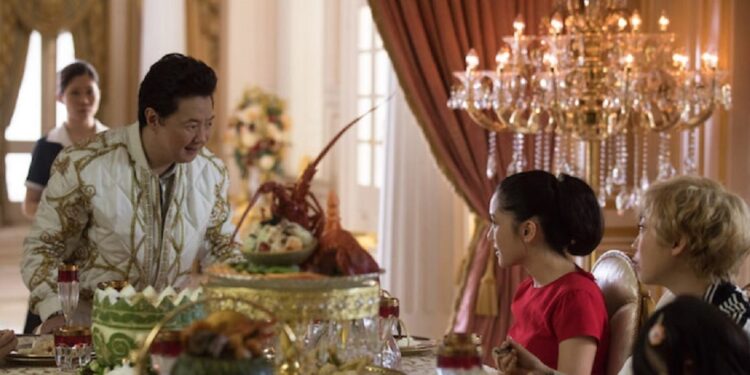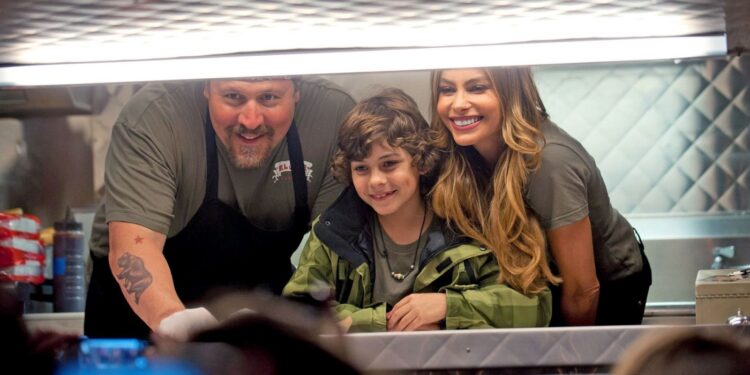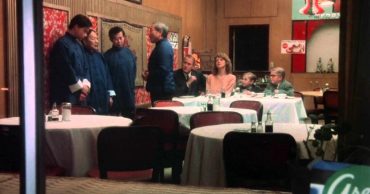There’s a reason popcorn goes hand in hand with a movie experience — it’s because the food in movies makes you hungry! While this may not be a factually correct statement, there’s no denying that the food in movies definitely gets your tastebuds tingling. However, upon retrospection, one realizes that food is often inculcated into the storyline to add depth rather than just exist as a mere prop. There’s a saying that food is the way to one’s heart, so it’s no surprise that it is used as a medium to deliver a more profound viewing experience. Delicious meals in movies are also often the one thing the audience remembers from a lackluster plot.
In the 21st century, countless YouTube channels have their USPs surrounding trying or recreating foods from different films. Be it Binging with Babish or People Vs Food from mukbangs to Nara Smith’s perplexing cooking videos, audiences love gobbling up food content. Umpteen pop-culture references have also been derived from iconic food movie moments. Like the infamous spaghetti kiss from Lady and The Tramp, which cemented spaghetti as the go-to first date meal. Even something as humble as the Dalgona candy from Squid Game became a viral sensation. Food brings people together, so let’s dive into its role in bridging the gap between the reel and real experience.
Food Is One of the Most Efficient Avenues for Cultural Representation in Films

Food in movies is a great medium to facilitate cultural exposure. The knowledge of different cuisines and cooking practices sensitizes audiences towards various cultures all around the world and, in turn, makes intercultural cohabitation a far less polarising experience. The representation of food in movies also helps debunk stereotypes and even serves as an exciting conversation topic for strangers of different ethnicities. The spaghetti, gelato, and Margherita pizza in Eat, Pray, Love has undoubtedly inspired many to take a trip to the beautiful country of Italy just to satisfy their cravings.
Studio Ghibli films are known for their phenomenal representation of Japanese cuisine, which makes viewers yearn to get a taste of the scrumptious Ramen from Ponyo and the Nabeyaki Udon from Whisper of the Heart! We can also agree that the Newton Food Center scene from Crazy Rich Asians has a fanbase of its own with its endless flow of delectable local Singaporean cuisine.
Hearty Meals Bring Layered Emotional Depth to a Scene

When thinking about a food movie moment that hit deep, one instantly thinks of ‘that’ scene from Ratatouille. When Remy’s (Patton Oswalt) ratatouille hits the cynical and cold food critic Anton Ego’s (Peter O’Toole) soul, taking him back to his childhood using his favourite meals. The scene was extremely moving and emphasized the movie’s core message: “Anyone can cook.” The cupcake baking scene in Bridesmaids was a masterful representation of how Annie (Kristen Wiig) made a beautiful, aesthetically pleasing piece of art. At the same time, her life at the time was anything but.
Pixar’s Bao is another example of how food can convey many emotions. The short film tells the story of an aging Chinese Canadian mother suffering from empty nest syndrome who experiences a second wave of motherhood when she makes a steamed bun. The storyline is simple yet moving, even winning the film an Academy Award. The scene where Chihiro (Rumi Hiiragi) from Spirited Away eats Onigiri is also a symbolic moment that conjures tears from even the strongest at heart. Another scene from a movie that hits home is the dumpling-making scene from Crazy Rich Asians. It was an excellent representation of how they kept traditions alive as a family despite the unimaginable wealth and uber-luxurious lifestyle.
Food Happens To Be One of the More Memorable Aspects of a Movie

Sometimes, a movie can be underwhelming, but the food portrayed could’ve been the one memorable aspect viewers take away from it. A great example of this would be Spanglish. Although the movie’s plot wasn’t the best, all the scrumptious food, from the BLT on steroids made by John Clasky (Adam Sandler) to the lavish Christmas dinner, left viewers salivating.
Another movie where the story didn’t hit as hard but had some mouthwatering spaghetti was the 2007 rom-com No Reservations. The movie starring Aaron Eckhart and Catherine Zeta-Jones is neither here nor there. It lacked chemistry between the leads and has a weird sense of melancholy that steers it too far off the track from being a rom-com. On the bright side, though, considering the movie revolves around two chefs falling in love, the food served promising visual appeal.
Culinary-Centric Movies Are in a League of Their Own

There are movies where food is the added bonus, and then there are movies where food is the center of attention — which are in a league of their own. The 2014 movie Chef left viewers desperately hungry by the end of the screenplay. From the mouthwatering grilled cheese to the decadent Cuban sandwich and the fluffy beignets from Café Du Monde, every scene had viewers salivating and despairing over the fact that they don’t get to taste the food on screen. Julie and Julia is another movie that deserves all the accolades for leaving everyone’s stomachs grumbling.
Apart from these rather jovial numbers, culinary movies also take a different route, like Burnt and The Menu, which travels through a path of unusual comedy. These movies go beyond just the salivation that food provides and explore creative and nuanced ways to use it as a medium for more profound storytelling. Any food on screen is a welcome addition, as viewers will always be hungry for good movies with the added visual touch of decadence. Don’t forget to check out five essential Paris-set movies centered around food!
 Follow Us
Follow Us





